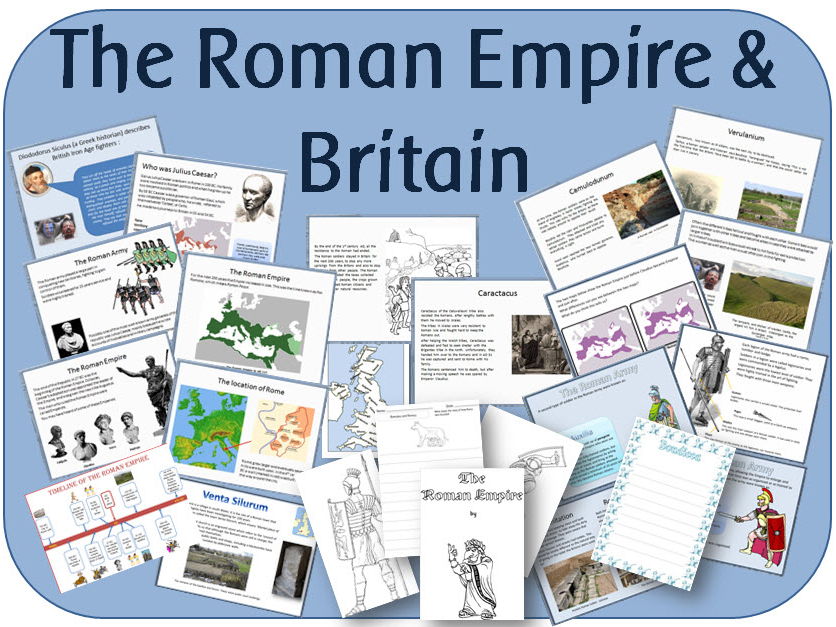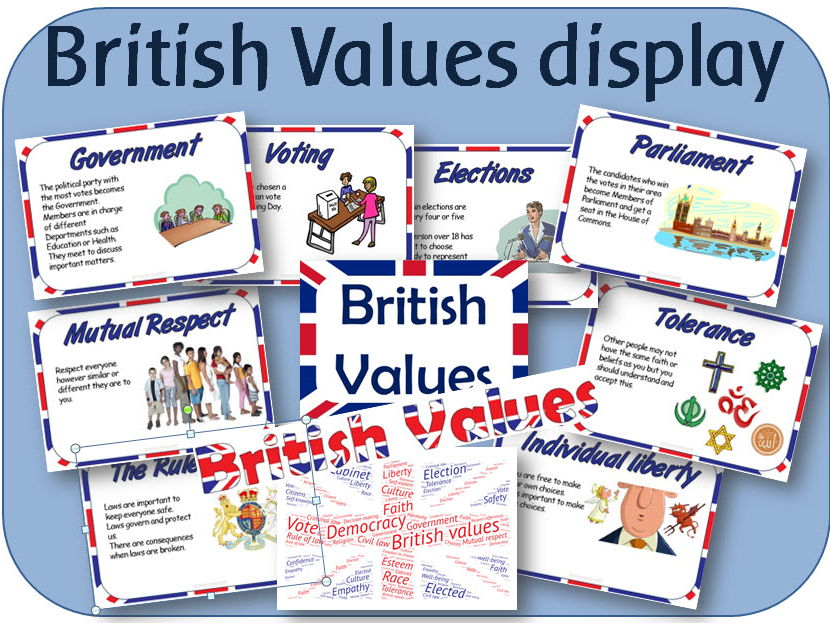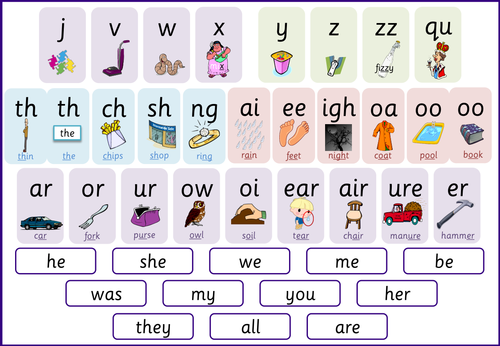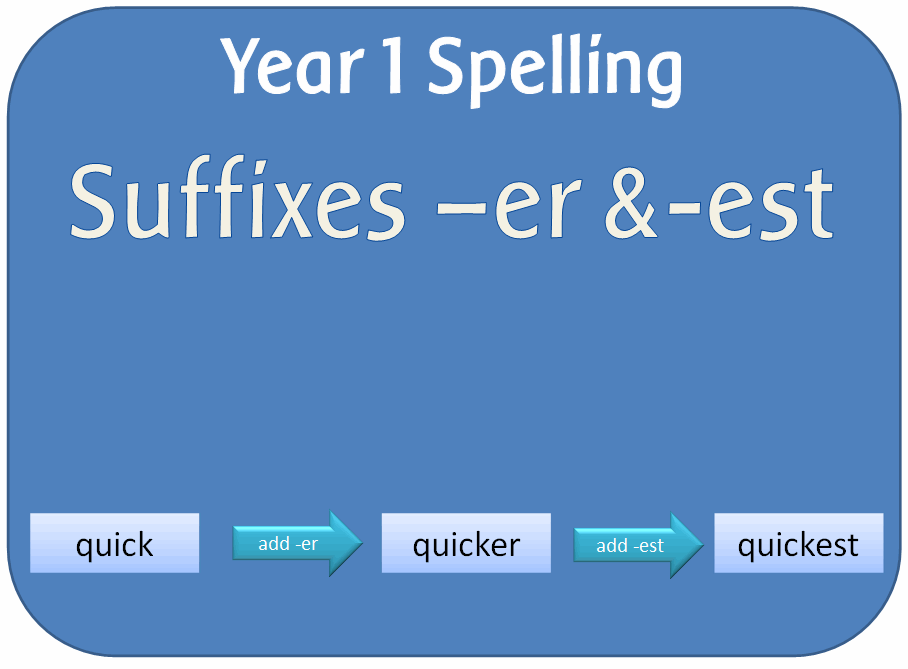
404Uploads
1100k+Views
694k+Downloads

Letters and Sounds Phase 3 word / help mats
The picture grapheme and word mat:
This word mat is to aid in the teaching and learning of sounds and tricky words in phase 3. Each letter is accompanied by a relevant picture, to give children visual cues to help them learn each grapheme. Each group is represented in a different colour, so that it is easy to focus on the letter sounds being learnt. Also on the word mat are the 12 tricky words from phase 3 for the children to learn.
Grapheme and word mat:
The second word mat is similar to the first, but with the visual cues removed, to help those children who know which letters represent which sounds, but still need prompts to recognise the written letters.
Phase 3 word mat - contains visual cues for Jolly Phonics.

Short history of the United Kingdom powerpoint
A 14 page powerpoint suitable for primary children showing the changes in the four countries of the UK from the Iron Age tribes to today. The presentation explains how Scotland, England, Wales and Ireland got their names, and how Britain and the UK were names.
The pages are headed:
Iron Age Tribes
The Roman Conquest
Anglo-Saxons
The Vikings
The Norman Conquest
The Middle Ages
The Tudors
The Stuarts
Georgian Britain
Victorian Britain and the British Empire
Irish Independence
The Commonwealth
The European Union

Dinosaurs, fossils and palaeontologists: powerpoint lessons for EYFS KS1 KS2
Powerpoint files:
Dinosaur AfL - 7 different questions to pose to the children before the topic begins.
Where and when did the dinosaurs live - Looks at Pangaea, and the timescale involved and how long ago it was.
Dinosaur discoveries - Looks at how fossils were found and ideas emerged about dinosaurs. Talks about early ‘palaeontologists’ including Robert Plot, Robert Buckland, Mary Anning, Mary Ann and Gideon Mantell, Richard Owen and their discoveries.
How fossils are formed - A step by step guide
Dinosaur diets - herbivores, carnivores and omnivores
What happened to the dinosaurs - looks at different theories of why dinosaurs became extinct.

SPaG Year 1 Spelling pack: Adding er and est to adjectives
A set of resources to teach the guideline/rule in the Spelling Appendix:
if the adjective ends in two consonant letters (the same or different), the ending is simply added on.
POWERPOINTS:
Adding er and est for comparisons: Explains that er and est can be added to words for comparison and shows examples in a single word and in sentences. It ends with an activity for children to add er and est to words, then form sentences using the suffixes er and est.PDF:
PDF:
er and est sentences worksheet: A list of words to add er and est to, and space for the children to write sentences with them in.
er and est word cards: For games and activities.
WORD:
Outline adaptable plan

Famous Explorers Christopher Columbus & Neil Armstrong pack: powerpoints, worksheets, and display
A set of worksheets / activities / display / planning resources for looking at the lives of 2 significant individuals in the past and comparing aspects of life in the periods they lived.
POWERPOINTS:
Who were Columbus and Armstrong: An introduction to the topic. It shows three pictures of each explorer, asking the children to look at the pictures and find out information.
Christopher Columbus: A 24 page lesson, looking at his life story, and his first journey across the Atlantic.
Neil Armstrong: A 19 page powerpoint, looking at the story of his life and his journey to the moon
Comparison of life in the different time periods: Shows the different explorers and where they lived on a simple timeline. It compares different aspects of life in both their lives including aspects such as transport, knowledge of the world, houses, food and uniforms.
DISPLAY (pdf):
A-Z lettering x 2, one with a sea background and Christopher Columbus banner, and one with a space background and Neil Armstrong banner
Portraits of the two men in picture frames
A4 title - Christopher Columbus (x 2 versions)
A4 title - Neil Armstrong (x 2 versions)
World maps x 2 from the different time periods
ACTIVITIES (pdf)
Cards - 12 different cards with objects that both explorers would have used. Can be used in card games, or for cutting and sticking sorting activities.
Topic covers x 6 different layouts for Christopher Columbus
Topic covers x 6 different layouts for Neil Armstrong
Writing sheets (x 4 lined and unlined) with Christopher Columbus border
Writing sheets (x 4 lined and unlined) with Astronaut border

Britain's settlement by Anglo-Saxons and Scots: PowerPoint lessons, worksheets & topic plan
A series of lessons to cover the objectives in the history curriculum 2014:
POWERPOINTS
Romans and Scots: A look at the Roman withdrawal from Britain in around AD 410, the fall of the western Roman Empire due to barbarian attacks and the Scots invasions from Ireland to north Britain.
The Anglo Saxons (invasions, settlements and kingdoms: place names and village life): A 38 page powerpoint with a contents page so it can be taught as an overview or an in-depth study. Introduces the topic with a timeline and a map showing where the Angles, Saxons and Jutes came from and where they settled in Britain. Looks at the seven main Anglo-Saxon kingdoms of Essex, Kent, Sussex, Wessex, East Anglia, Mercia and Northumbria, showing maps of each region and giving information on important kings. Mentions the current debate about whether Britain was invaded or peacefully settled by the Anglo-Saxons. Gives examples of place names and a list of Anglo-Saxon words and their meanings that many place names have originated from. Ends with a look at Anglo-Saxon village life.
Anglo-Saxon art and culture: Includes the Anglo-Saxon runic alphabet, literature such as Beowulf and the Anglo-Saxon Chronicles, the Bayeux Tapestry, and looks closely at Anglo-Saxon art
Christian conversion: Explains the pagan religion of the Anglo-Saxons then the rise of Christianity in Britain from monasteries in Iona, Lindisfarne and Canterbury. Explains the difference between the Celtic Christianity and the Roman Christianity, and how problems were solved at the Synod of Whitby.
Sutton Hoo discovery: An in-depth look at the ship burial at Sutton Hoo and the artefacts found.
WORKSHEETS AND ACTIVITIES
Topic booklet covers
What I know about the Romans & Anglo-Saxons
Dal Riata writing templates
Romans writing template
Anglo-Saxon arrival in Britain
Anglo-Saxon kingdoms map
Anglo-Saxon place names
The Anglo-Saxon Chronicles (in English)
The story of Beowulf (English translation)
Writing with runes
Calligraphic writing x 2 versions
Illuminated letters: Large letters to colour like the monks
Iona, Canterbury and Lindisfarne worksheet
Writing border - saints
Writing sheet - monks
Blank map
Writing border - Anglo-Saxons
Writing border - monks

Mountains display pack
This resource contains headings, vocabulary and posters, all in pdf format on CD to print out for a Mountains display
MOUNTAINS LETTERING - This lettering is to cut out for display. 'MOUNTAINS' / 'THE MOUNTAIN ENVIRONMENT' is written out, which can either be printed as a banner, or cut out for display. There are also all upper and lower case letters and numbers included so that you can print out whatever you need to personalise your display.
THE MOUNTAIN ENVIRONMENT A4 HEADER - to print.
MOUNTAINS VOCABULARY DISPLAY - With headings and photographs (2 per A4 sheet - Includes blizzard, avalanche, snowdrift, snow, hail stones, snow flake, alpine glow, flood, peak, mountain range, base station, mountain tourism, ski run, litter, mountain, hill, flora and fauna.)
MOUNTAINS POSTERS - 15 A4 sheets, with explanations and descriptions:
What is a mountain?
Plate tectonics (x2)
Fold mountains
Fault-block mountains
Volcanic mountains
Dome mountains
Plateau mountains
Mountain climates
Mountain temperatures
Mountain weather
Mountain rainfall
Mountain ranges - map
Seven Summits - map
UK mountains - map

Tocuaro & Mexico - Powerpoint lessons, worksheets and activities
A set of geography resources looking at where Tocuaro is and what it is like there.
POWERPOINTS
Tocuaro mind map: For the beginning of the topic, to record what the children already know.
Where is Tocuaro?: Shows the location of Tocuaro, in relation to the UK, Europe, and the rest of the world.
What is Tocuaro like?: Photographs of life in and around Tocuaro, for the children to look at to find information.
What is it like to live in Tocuaro?: Photographs of a Mexican family, different types of jobs and activities, food, dining, school, and traditional costumes.
Is life in Mexico similar to life in the UK?: Photographs showing different aspects of life in Tocuaro and Mexico - street scenes; church; market stalls; crafts; houses; children; high street; washing clothes, and cooking.
PRINTABLE RESOURCES (PDF)
How to get to Tocuaro: A world map for the children to draw a route from their home town to Mexico.
What is it like in Tocuaro: Three versions for different abilities - to write down what they think Tocuaro is like.
Similarities and Differences: Worksheet for writing lists of similarities and differences.
Mask template x 3: For the children to design their own mask.

Introduction to reading and writing sentences Y1 Year 1
These resources introduce the concept of a sentence and show how to write a sentence.
POWERPOINTS:
Introduction to sentences: Explains what sentences and punctuation are. It reinforces the importance of capital letters, full stops, question marks or exclamation marks, and spaces in-between words.
How to compose a sentence: Introduces the concept of sentence writing, and how the children should think about and then say the sentence before they write it down, remembering to read through and check their work when finished.
“I can” sentences: simple sentences for the children to read. The vocabulary gets progressively harder, from simple CVC words to using long vowel graphemes and blends.
Jake’s Full Stop: A story demonstrating how important it is to put full stops in the right places.
Picture sentences: Find the correct sentence out of four to match the picture.
Joining sentences with ‘and’: Demonstrates how text can become more interesting when ‘and’ is used to join sentences. Ends with sentences for the children to join with the word and.
Words that fit: Find the words that can be substituted in the sentence.
Sentence building: Jumbled up words that need arranging into sentences. Suitable for a class writing activity.
WORKSHEETS (PDF) - to accompany the PowerPoints
Worksheets: 15 different worksheets to accompany the lessons, including -
A checklist when writing sentences
Finish the ‘I can’ sentences
Write the words that fit
Write sentences about a picture
Punctuation story
Match the sentences
Cut and make a sentence
The worksheets are in both colour and black and white.
Some of the PowerPoints include a linked video to watch. This is a link shared through SafeShare T.V., a program that filters adverts and unwanted commercials from the clip. You may need to check if you can access this in school.
The links were checked before uploading, but if any don’t work, feel free to contact me.

SPaG Year 2 Spelling: the /n/ sound spelt kn and gn
A set of resources looking at the /n/ sound spelt kn and gn at the beginning of words.
POWERPOINT: Explains the spelling and gives a short explanation of why these types of word exist, then gives examples for the children to read. Then there is a spelling activity, using a look, hide and check format
BINGO: Two sets, kn words and kn and gn words
CARDS: Matching cards with words and pictures
WORDSEARCH: kn words
WORD DOCUMENTS: Lists of words and a planning document.

SPaG Year 3 & 4 Spelling: The /k/ sound spelt ch
Resources to teach the spelling guidelines for words with the /k/ sound spelt ch
POWERPOINT:
The /k/ sound spelt ch: Explains that these type of words come from the Greek language. It gives examples of the most common words with this grapheme, then ends with a writing activity.
PDF (PRINTABLE) RESOURCES
Look Write Cover Check: For spelling practice
Ch for the k sound worksheet
Ch for the k sound picture worksheet
Wordsearch
Although every effort has been made to check wordsearches for unintentional inappropriate words, it is recommended that teachers double check them before giving to children.
TEACHER RESOURCES
Word list
Adaptable outline plan

SPaG Year 3 Grammar: Formation of nouns using a range of prefixes
The first powerpoint recaps the terminology noun and prefix then explains how prefixes are added to words and change their meaning. Gives some examples of words with the prefixes super, auto, anti and tele and asks how the meanings have changed.
The second powerpoint looks at a range of prefixes the children should have covered in Y2 and introduces new ones alongside their meanings.
PDF WORKSHEETS & ACTIVITIES:
Word list – nouns using prefixes
Fore/mid/sub jigsaw cards
Super/auto/anti jigsaw cards
Prefix anti worksheet
Prefix auto worksheet
Prefix super worksheet
DISPLAY:
Noun prefixes display
Plus a Y3 VG&P plan

SPaG Year 3 & 4 Spelling: words with the /eɪ/ sound spelt ei, eigh, or ey.
POWERPOINT: Looks at all the common words containing these graphemes for the /ai/ phoneme. Ends with a spelling activity.
PDF (PRINTABLE) RESOURCES:
Look Write Cover Check: For spelling practice
Wordsearch
TEACHER RESOURCES:
Word list
Adaptable outline plan

SPaG Year 4 Sentence Grammar: Fronted adverbials
POWERPOINTS:
Fronted Adverbials: Explains what they are and how to use them (including the use of commas from the punctuation objectives)
PRINTABLE PDF FILES:
Adverbial spotter worksheet: To use with reading books or passages of text
Adverbials of time display
Adverbials of manner display
Adverbials of time display
Adverbials of time cards: For composition activities etc
Adverbials of manner cards: For composition activities etc
Adverbials of time cards: For composition activities etc
5 x Word documents with different passages to use with spotter sheet

Letters and Sounds Phonics tracking assessment booklet Phases 2 - 6
This is a 9 page booklet in Microsoft word and a copy in pdf which assesses phases 2, 3, 4, 5 and 6. It is written in Sassoon Infant font which is embedded in the file so will work even if you do not have it installed on your computer.
It includes assessment of letter sounds; tricky words; CVC words; non-word reading tasks; oral blending and oral segmentation; consonant digraphs; vowel graphemes; letter formation; alternative pronunciation for graphemes; alternative spellings for phonemes; and progression of reading skills in phase 6.
The Microsoft Word file can be edited and changed if needed.

EYFS Rhythm and Rhyme phonic activities resource pack
This pack is a collection of PowerPoints and printable resources in pdf. It will help give children experience how words rhyme, and to develop an awareness of rhythm in speech. Listening to and joining in with rhymes and playing rhyming games help children to develop skills to know how letters correspond to sounds.
Fits in with Letters and Sounds Phase 1.
PRINTABLE GAMES AND ACTIVITIES:
• Dominoes – showing pictures of simple cvc words
• Odd one out cards – print, cut and laminate for a rhyming game
• Rhyming pairs – 40 images showing pictures of rhyming pairs. There are 4 per A4 page so can also be used for display or flashcards
• Rhyming soup game – A printable version of the powerpoint. The children have to make a soup out of rhyming objects (eg snake, cake, rake etc)
• Rhyming words bingo – 4 bingo cards with 7 pictures each.
• Two rhyming worksheets
•
DISPLAY:
• Large lettering: Rhymes (one letter per A4 page, if you want them smaller you can alter the print settings.)
• Large lettering: Rhyme Time(one letter per A4 page, if you want them smaller you can alter the print settings.)
• What rhymes with….posters – A set of 6 A4 colourful posters with pictures of rhyming words. Rhymes include what rhymes with…can / hat / pot / bug / cap and zip.
POWERPOINT GAMES:
• Can you think of words that rhyme - Simple introduction to rhyming.
• Making up rhymes - Explains rhyming words, and then encourages the children to make up rhymes using the images.
• Odd one out - Find the picture that doesn’t rhyme from a choice of 3, with immediate feedback.
• Playing with words - 20 images of words with longer syllables.
• Rhyming pairs - Find the rhyming pair from a choice of 3, with immediate feedback.
• Rhyming puppets - 14 name rhymes for the children to finish.
• Rhyming soup - ake - An interactive version of the game, the children click on the object to put it in the soup bowl.
• Rhyming soup - an
• Rhyming soup - at
• Rhyming soup – ip
• Rhyming soup – ox
• Rhyming words - 11 sets of rhyming words, encouraging the children to make up rhymes with them.
• Words that rhyme - Find the 2 pictures that rhyme from a choice of 3.
•
POWERPOINT RHYMES:
• A pig who was big - 9 rhyming verses about pigs
• Action Rhymes - 8 different rhymes: Two little feet / I wiggle / This is the way / Wind the bobbin up / A sailor went to sea / Jack-in-the-box / Clean up/ I’m a little teapot / Row your boat.
• 5 fat peas
• Dingle Dangle Scarecrow
• Down in the jungle
• Head, shoulders, knees and toes
• Katalina Matalina
• Peanut butter
• Ten fingers
• The Farmer’s in his den
• The wheels on the bus
• There was a princess

KS1 Maths Measurement: WEIGHT AND CAPACITY powerpoints, activities, vocabulary and display pack
This pack meets the new KS1 curriculum requirements for capacity / volume and weight / mass.
It covers measuring with non standards units; moving on to standard units.
It consists of powerpoint lessons, display, headings, worksheets and activities.

KS1 Maths Measurement: LENGTH & HEIGHT powerpoints, activities, vocabulary and display pack
A set of lessons to introduce measuring with standard and non-standard measures such as cubes, hand spans etc, with worksheets and printable centimetre rulers for recording practical activities.
Also includes headings, borders and vocabulary posters.

Investigating airports and planes KS1 flight transport topic lessons and worksheets
A unit of work with 3 PowerPoint lessons, investigating air transport, visiting the airport and flying on a plane; plus 23 worksheets.
LESSONS:
INTRODUCTION TO FLIGHT: Looks at maps of the UK, Europe, USA and the world - encouraging children to discuss which modes of transport would be suitable for getting to different places. Introduces flying as the best kind of transport for travelling to places far away. (17 slides)
THE AIRPORT: A look at different things that are seen when travelling through the aiport, with pictures, descriptions and explanations. Explains the airport terminal, inside and outside; checking in; check in desk; baggage; baggage handlers; boarding card/QR scan; security; departure lounge; information boards; departure gates; boarding the plane; the runway; air traffic control and luggage carousel. (30 slides)
AEROPLANES: Explores different parts of a plane - the flight deck, engines, wings, flaps and spoilers, fuel, fuselage, the tail and wheels; plus the inside of the plane - the cabin, doors, overhead bins, seats, safety cards, flight attendants, windows, galley, food and toilet. (35 slides)
WORKSHEETS:
23 worksheets including -
Labelling airport signs
Making a passport
Writing a postcard
Describe the aiport pictures
Label parts of a plane
Maps of the world, Europe, the USA and the UK
A place I would like to visit
Plus A-Z lettering with airport picture background
3 pages of airport colour clipart
Writing border sheets
Some of the PowerPoints include a linked video to watch. This is a link shared through SafeShare TV - a programme that filters adverts and unwanted advertising from the clip. You may need to check if you can access this in school.
The links were checked before uploading, but if any don’t work, feel free to contact me and I will update them.

Volcanoes: KS2 Natural disasters - powerpoint lessons
Detailed explanations of how volcanoes are formed, how they erupt and where they are found, plus a case study of the 2010/2011 eruptions in Iceland.
What are volcanoes? - Includes a historical background to the name volcano; explains what a volcano is; what they release; what they are like; what happens in an eruption; can they be predicted; and volcano facts.
How and why volcanoes erupt - An explanation of: where magma comes from; tectonic plates; divergent and convergent plate boundaries; hot spots; and location of the world's volcanoes.
Volcano classification - Identifies and explains the different ways in which volcanoes can be classified - Type of lava (runny or thick); Type of volcanic eruption (Hawaiian, Strombolian, Vulcanian, Pelean, or Plinian); Shape of volcano (focusing on just 2 types - Shield volcano, stratovolcano / composite, plus talks about under water volcanoes); and whether they are active, dormant or extinct.
Volcano glossary - Explanations and pictures of vocabulary relating to volcanoes (Magma chamber, vent, conduit, flank, cone, lava flow, pyroclastic flow, ash cloud, volcanic bomb, crater, caldera)
Living near a volcano - Looks at the reasons why people live near or on volcanoes, and asks the children to think about what hazards there could be.
Are there volcanoes in Britain? - A brief explanation of volcanic activity in Britain, and examples of extinct volcanoes in England, Scotland, Wales and Ireland.
Volcano questions - 11 photographs of volcanoes and their effects, with questions.
Make a volcano - instructions for making an eruption






















